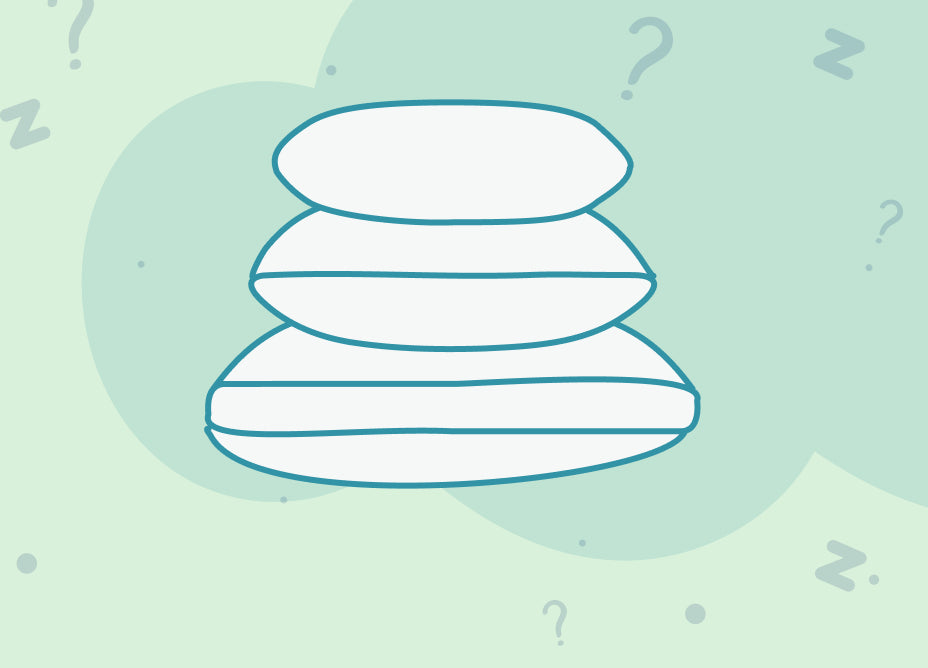Slatted bases feature horizontal wooden planks stretched across the bed frame that provide a responsive surface. In contrast, solid bases provide unwavering, consistent support across the entire surface. Each offers unique benefits, as well as some drawbacks for certain sleepers.
When on a mission to get better sleep, most people focus on the mattress. But the foundation beneath it? That’s where the real support story begins.
Slatted bed bases offer flexible support and consistent airflow, making them lightweight and breathable. Solid bed bases, on the other hand, provide firm, uniform support with added stability.
How do you know which one is right for you? This guide will break down slats vs solid bed base differences so that you can choose the best foundation for your unique sleep needs.
What Is a Slatted Bed Base?
A slatted bed base is the go-to for those who like a little bounce in their bedtime story. Built with rows of evenly spaced wooden planks, slatted bed bases create a slightly springy feel and allow your mattress to breathe.1
How It Works
Wooden slats run horizontally across the frame to provide adaptive support and a hint of give beneath pressure points like your shoulders and hips. This allows the frame to shift subtly with your movements, offering personalized comfort as you sleep.1
Types of Slatted Bed Bases
Importantly, not all slats are created equal — the type you choose affects firmness and feel2:
- Solid slats are flat and firm, creating a sturdy, no-nonsense foundation.
- Sprung slats are gently curved and designed to flex, offering a more responsive experience.

Pros of Slatted Bed Bases
There’s also more to slats than meets the eye — they’re a favorite for a reason. In particular, slat bed bases1:
- Are lightweight and easy to move
- Promote airflow beneath the mattress, helping you sleep cooler at night
- Ensure your mattress stays dry, encouraging a more hygienic and comfortable sleep
Cons of Slatted Bed Bases
Still, even the most breathable base can have a few hiccups1:
- Slats may sag or shift over time, especially if not secured properly
- Gaps between slats can lead to wear on certain mattresses (like all-foam options)
- Improper assembly or loose parts can lead to creaks and squeaks
That said, high-quality slatted bed frames—like the ones Casper offers—are designed to minimize these issues with sturdy construction and easy-to-secure components, giving you long-lasting support and peace of mind.
What Is a Solid Bed Base?
If a slatted bed base is flexible and breezy, a solid bed base is all about strength and stability. It’s a firm foundation designed to support your mattress evenly without shifting, bouncing, or gaps.4 A solid bed base is ideal for snoozers who prefer a sturdier sleep surface or want to minimize motion transfer at night.
How It Works
A flat, uninterrupted surface spans the frame and offers even support across the entire mattress. Think of it like the mattress equivalent of hardwood floors — stable, structured, and built to last.
Types of Solid Bed Bases
There’s more than one way to go solid. When it comes to solid bed bases, these are the most popular styles4:
- Platform bases – Clean, minimalist, and often low-profile for a modern look
- Divan bases – Offer upholstered frames with optional drawers for discreet storage
- Ottoman bases – Equipped with a hydraulic lift for easy access, under-bed storage
Some solid platform beds are designed to provide additional headroom and storage options, making them a great choice for maximizing small bedroom spaces.
Learn more about platform beds vs box springs in our blog.
Pros of Solid Bed Bases
Solid foundations bring several advantages to your best night’s rest. They5:
- Provide consistent support — ideal for dense or heavy mattresses
- Minimize motion transfer (a win for couples or light sleepers)
- Often include built-in storage to help maximize bedroom space
- Can be used with or without a box spring, depending on your preferences
Cons of Solid Bed Bases
However, stability can come at a cost5:
- Limited airflow beneath the mattress may trap heat over time.
- Solid bases are heavier and more difficult to move, especially in tight spaces.
- A solid base may feel too firm for sleepers who prefer a little give.
- Not the best option for those who like adjustable features or a traditional bouncy feel.
Slatted vs Solid Bed Bases: Main Differences
Exploring the key differences between slats vs solid bed bases can reveal which option will best enhance your sleep quality and fit seamlessly into your lifestyle.
Support & Comfort
The base you choose can change how your mattress (and how your body) feels when you wake up5:
- Slatted bases flex slightly to support your body’s movement.
- Solid bases provide a firm, even surface that stays steady all night.
- Either base can help you support a mattress properly if matched to the right mattress type
Ventilation & Airflow
Similar to your bedding, the structure of your bed base can play a key role in temperature regulation5:
- Slatted bases promote better airflow and reduce heat retention.
- Solid bases can restrict airflow but enhance stability.
Breathable bedding like quality bed sheets can also help regulate temperature and enhance your overall sleep experience.
Compatibility with Mattress Types
Not every mattress loves every base, so it's worth considering how your mattress material and weight will interact with the foundation underneath5:
- Slatted bases pair well with most mattresses (just check the spacing for foam!).
- Solid bases are ideal for plush or heavy mattresses that need extra reinforcement.
Cost & Maintenance
While both bases bring value in their own way, their differences show up in their price tags and how much care they require over time5:
- Slatted bases are often lighter, more affordable, and easy to maintain.
- Solid bases can be pricier and bulkier.

How to Choose the Right Bed Base for You
The ideal base depends on your sleep style, your space, and your mattress. Before you invest, consider:
- What kind of mattress do you have? (Foam? Hybrid? Something plush?)
- Do you prefer softer, flexible support or firmer, structured stability?
- Do you need extra storage space or want a clean, minimalist setup?
- What’s your budget, and how much are you willing to invest in long-term comfort?
Casper Bed Frames: The Ideal Foundation for Any Mattress
At Casper, all our bed frames are thoughtfully engineered for both form and function. They’re breathable yet supportive, made with high-quality materials that will stand the test of time, and stylish enough to upgrade your entire sleep space.
Whatever you’re looking for, we’re ready to help you find it. Because with Casper, you don’t just get a mattress — you get the whole dreamscape.
Sources:
- Sleepopolis. Box Spring vs Slats. https://sleepopolis.com/guides/box-spring-vs-slats/
- The Bed Consultant. Sprung slats or solid slats, which are better? https://thebedconsultant.com/beds/sprung-slats-solid-slats-which-are-better/
- Sleep Foundation. Types of Bed Frames. https://www.sleepfoundation.org/mattress-information/types-of-bed-frames
- Linkedin. Comparing Slatted and Solid Bed Bases: Which is Right for You? https://www.linkedin.com/pulse/comparing-slatted-solid-bed-bases-which-right-you-ray-niu-jgtfc











